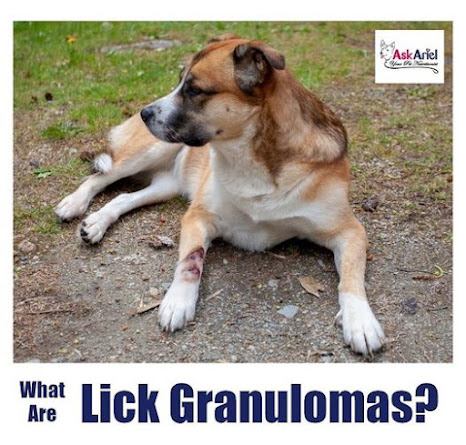Updated: 3/25/24
Lick granuloma, also known as acral lick dermatitis, is a challenging condition that affects dogs. Characterized by excessive licking that leads to the formation of a raised, often ulcerated lesion, this condition can be frustrating for both dogs and their owners.
What is Lick Granuloma?
Causes of Lick Granuloma
Underlying medical conditions: Painful conditions such as arthritis, allergies, or skin infections may prompt a dog to lick as a way to alleviate discomfort.
Environmental factors: Boredom or confinement can lead to repetitive licking behavior, especially in breeds predisposed to compulsive behaviors.
Neurological disorders: In some cases, neurological conditions may contribute to compulsive licking behavior.
Symptoms of Lick Granuloma
- Raised ulcerated lesions
- Hair loss in the affected area
- Redness and inflammation
- Thickened or granular skin texture
- Foul odor due to secondary bacterial or fungal infections
- Persistent licking behavior despite attempts to intervene
Treatment Options for Lick Granuloma
Treating your dog’s lick granuloma often involves a multifaceted approach, starting with behavioral modifications to address underlying issues. Identifying triggers such as anxiety or boredom is crucial, and providing alternative activities like increased exercise and mental stimulation games can naturally decrease licking behavior. In addition to behavioral changes, prescribed medications and topical treatments may be necessary to reduce compulsive licking and aid in healing. Low-level laser therapy has shown promise for more advanced cases, while surgical removal of affected tissue may be considered as a last resort.
Lick granuloma dog home treatments can play a large role in prevent further trauma from licking. Bandaging or covering the affected area is essential. Putting a shirt sleeve or T-shirt on the dog can create a world of difference. You can cut a human shirt so that there is just one sleeve along with the neckline remaining. Put your dog's leg through the sleeve and the neckline over the neck. This enables the dog to move freely and comfortably without access to the lick granuloma. Use a cone as a last resort and look for soft cones if possible.
Also, using herbal remedies or providing dietary supplements like omega-3 fatty acids can complement veterinary treatment efforts. Ask Ariel’s PureOcean Wild Omegas is derived from wild-caught sardine, anchovy, and mackerel, our concentrated formula ensures potent omega-3 fatty acids for optimal health benefits. We prioritize quality and test every batch to ensure it's free from contaminants, heavy metals, and toxins.
Lick granuloma may require patience and persistence to manage effectively, but by addressing underlying behavioral issues, addressing any medical conditions, providing appropriate medical treatment, and implementing home remedies your dog can experience relief from this frustrating condition.
Author: Susan Davis
Original Post: 6/21/23
Updated: 3/25/24

